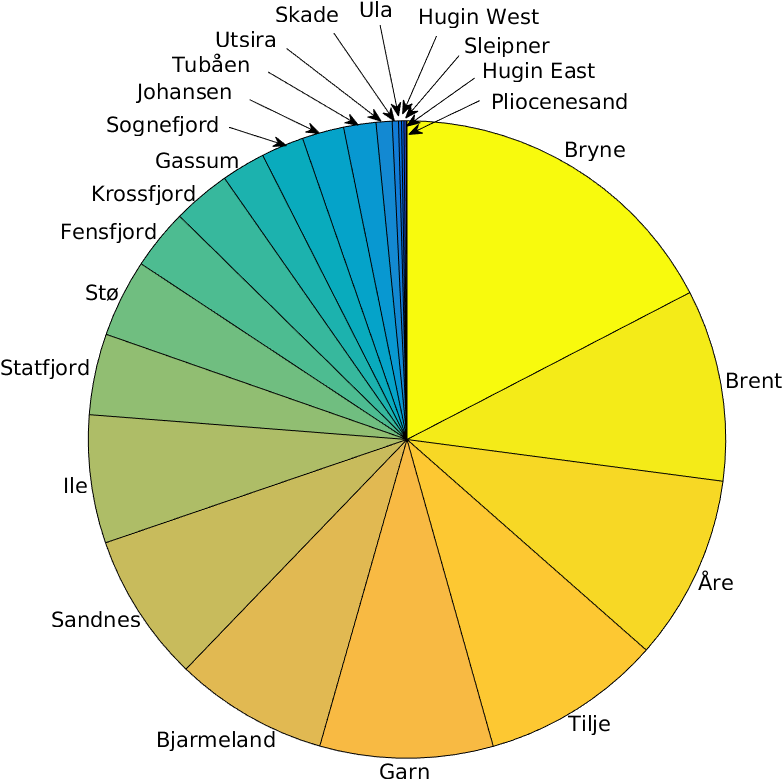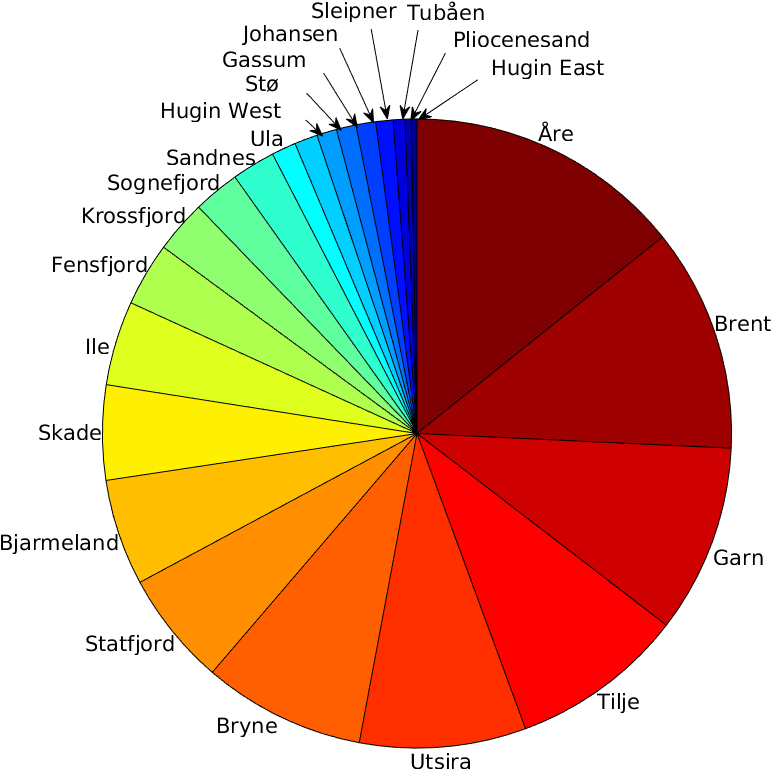|
Breakdown of CO2 storage capacity of formations in the Norwegian Continental Shelf
The theoretical CO2 storage capacity is calculated for 23 of the formations found along the Norwegian Continental Shelf. The capacity for each formation is broken down in terms of three types of trapping mechanisms, namely structural, residual, and dissolution trapping. These trapping capacities serve as an upper bound estimate, and simulations are necessary to determine practical storage capacities.
Trapping capacitiesTable 1 summarizes the theoretical trapping capacities for 23 of the formations found along the Norwegian Continental Shelf. These formation datasets were obtained from the NPD's CO2 Storage Atlas [1]. Capacity calculations were done by using MRST-co2lab's The estimates given for the North Sea formations can also been obtained using MRST-co2lab's interactive tool
Click on the name of the formation in Table 1 to view a picture of the formation's top surface. In the picture, the black lines are the elevation contours of the top surface, regions colored in light red are the structural traps, and the red lines represent the rivers or spill-paths that connect individual structural traps along a spill-tree. More information about spill-point analysis including tutorials and examples can be found here. Figure 1 illustrates that there is not necessarily a linear trend between structural trapping capacity and the total trapping capacity. For example, Utsira is ranked as the 5th highest in terms of total storage capacity (~118 Gt), however is the 7th lowest in terms of storage capacity in structural traps (~1 Gt). As another example, Bryne has the highest structural storage capacity (~24 Gt), but does not have the highest total storage capacity (rather ranked as the 6th highest in terms of total capacity (~114 Gt)).
Theoretical versus practical storage capacityThe storage capacities presented here are the upper bounds of how much CO2 could theoretically be stored in a given formation. These estimates assume that an entire formation can be utilized for storage, implying that CO2 has filled the formation's pore volume. Such a scenario may be possible to achieve, however it may not be practical. For example, a large number of injection wells distributed over the formation could fill the entire formation pore volume with CO2, however the cost associated with so many wells may be financially unfeasible. Other aspects that may make it impossible to utlize all of a formation's pore volume include CO2 leakage through spill-paths, and the impact of pressure build-up on caprock integrity. Such aspects are related to the flow-dynamics, and are best investigated through simulation. Thus, in order to obtain practical storage capacities, it is nescessary to perform simulations of various injection scenarios for each formation.
References
|
||||||||||||||||||||||||||||||||||||||||||||||||||||||||||||||||||||||||||||||||||||||||||||||||||||||||||||||||||||||||||||||||||||||||||||||||||||||||||||||||||||||||||||||||||||||||||||||||||||||||||||||||||||||||||||||


